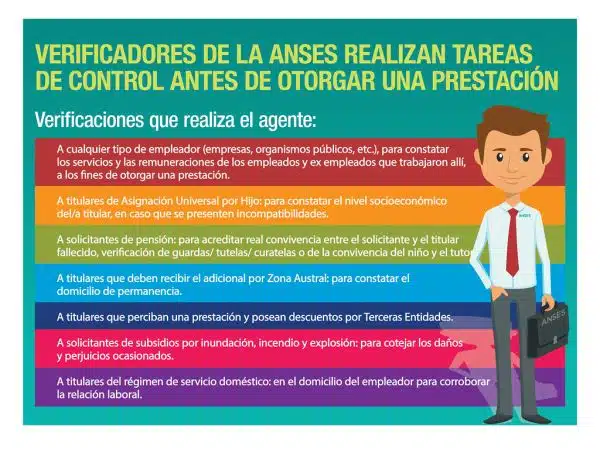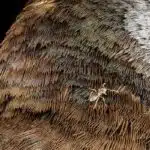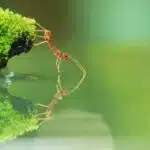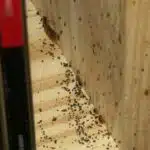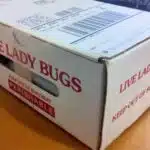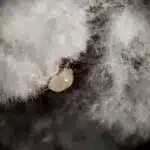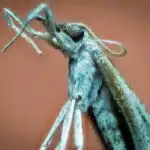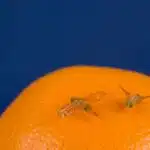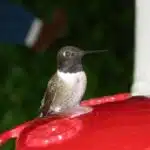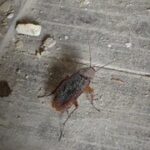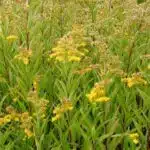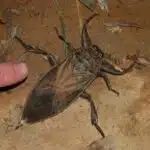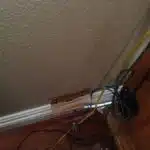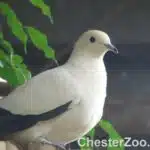Ants are social insects that belong to the family Formicidae. They play an important role in the ecosystem as they help in soil aeration, seed dispersal, and nutrient cycling. However, ants can also become a nuisance when they invade homes and gardens.
Identifying and controlling ants is essential for maintaining a healthy environment. Ant infestations can cause damage to buildings, contaminate food, and transmit diseases. In this article, we will discuss how to identify different types of ants and effective methods for controlling their populations both indoors and outdoors. By understanding the behavior of ants and implementing proper control measures, individuals can effectively manage ant infestations while minimizing harm to the environment.
The Importance Of Ant Control
Ants are small, six-legged insects that belong to the Formicidae family. They can be found all over the world, from deserts to rainforests, and play an important role in many ecosystems. However, when they invade our homes or businesses, they can cause significant damage and pose health risks to humans.
The importance of ant prevention cannot be overstated. Ant infestations can lead to the contamination of food and surfaces with bacteria they carry on their bodies. Some species of ants, such as fire ants and carpenter ants, can also cause painful bites or stings that may require medical attention. In addition, certain types of ants can damage structures and equipment by nesting in walls or chewing through wiring.
Health risks associated with ant infestations vary depending on the species present. For example, odorous house ants have been known to contaminate food with harmful bacteria like Salmonella and E. coli. Carpenter ants can cause structural damage to buildings by hollowing out wood for their nests, while fire ants inflict painful stings that can trigger allergic reactions in some people. Therefore, it is essential to identify and control ant infestations before they become a serious problem.
Understanding ant behavior is crucial for effective ant control measures. By understanding how ants behave and what attracts them to certain areas, we can develop strategies for preventing infestations from occurring in the first place or eliminating existing ones efficiently. In the following sections, we will explore different types of ants and common methods used for controlling them in residential settings.
Understanding Ant Behavior
Ants are fascinating insects that have a sophisticated social structure. They communicate with each other through chemicals known as pheromones, which allow them to convey information about food sources, potential dangers, and nest locations. Ant communication is crucial to their survival as a colony and enables them to work together efficiently.
The social structure of ants is hierarchical, with a queen at the top who is responsible for laying eggs. The workers, who are sterile females, take care of the young, gather food, and defend the colony. Some species of ants also have soldiers whose primary function is to protect the colony from predators.
Ants are highly adaptable creatures that can live in various environments such as forests, deserts, and cities. They can be found in almost every part of the world except for Antarctica. Understanding their behavior is essential when it comes to controlling them effectively.
- Ants have been known to sacrifice themselves for the greater good of the colony.
- The strong sense of community among ants can be compared to that of humans.
- Some species of ants farm aphids for their sweet excretions.
- Ants can lift objects up to 50 times their body weight.
- Certain types of ants can pose a threat to human health by carrying diseases such as salmonella.
The study of ant behavior is an exciting field that has yielded many discoveries about these remarkable insects. In understanding their social structures and communication methods, we can learn how best to control them without causing harm or disrupting their delicate balance. Next step: delving into the different types of ants and their behaviors in more detail.
Types Of Ants
Fire ants are common in warm climates, and their colonies consist of multiple queens. They are typically reddish-brown in color and can be identified by their painful sting. Carpenter ants are usually larger than other common ant species, and are usually black or brown in color. They can be identified by their ability to tunnel through wood. Pharaoh ants are small and yellow in color. They can be identified by their behavior of living in large colonies in buildings and homes. Control of fire ants is typically achieved through baiting and physical removal. Carpenter ants can be effectively controlled by removing their nest sites and sealing up entry points. Control of Pharaoh ants is often achieved by utilizing a combination of baits, insecticides, and mechanical exclusion.
Fire Ants
As an entomologist, it is important to understand the behavior and characteristics of different ant species. One type of ant that requires attention is the fire ant. Fire ants are known for their painful stings, and managing their colonies can be challenging. To effectively control fire ants, identifying their mounds is essential.
Fire ant mounds are easily recognizable as they have no entry or exit holes on the top. Instead, they have a circular pattern of small soil particles around the mound’s base, which is usually flat or slightly concave. These mounds can be found in sunny areas such as lawns, pastures, and fields. It’s important to note that fire ants may also nest in wall voids and under concrete slabs.
To manage fire ant colonies effectively, the use of insecticides is often necessary. However, it’s essential to choose a product that targets fire ants specifically and apply it correctly to avoid harming other beneficial insects. A bait treatment approach may also be effective in controlling fire ants as it directly targets the colony instead of individual workers. When using any insecticide for managing fire ants, always follow the manufacturer’s instructions carefully to ensure safety and effectiveness.
In conclusion, identifying and controlling fire ants’ colonies can help reduce their painful stings and prevent damage to plants or structures nearby. By understanding their behavior patterns and utilizing appropriate management techniques such as targeted insecticide application or bait treatments, we can help serve our community by minimizing potential hazards caused by these aggressive insects.
Carpenter Ants
Carpenter ants are another ant species that entomologists need to understand. Unlike fire ants, carpenter ants do not sting, but they can cause structural damage to wooden buildings or structures. Carpenter ants are known for their nesting habits inside damp wood, and their colonies can be challenging to locate. These pests are attracted to moist areas such as bathrooms, kitchens, and basements.
To prevent carpenter ants from nesting inside your home, it’s essential to eliminate any sources of moisture. Fixing leaks, repairing damaged gutters or downspouts, and reducing humidity levels can help deter these pests from entering your home. Additionally, sealing any cracks or openings around windows and doors can also help prevent carpenter ant infestations.
If you suspect a carpenter ant infestation in your home, it’s crucial to contact a pest control professional immediately. These professionals have the necessary knowledge and tools to locate and eradicate the colony effectively. In some cases, bait stations may be used to attract the ants and eliminate them gradually. However, if there is significant damage caused by the colony’s nesting habits, structural repairs may also be necessary. By taking preventative measures and addressing infestations promptly, we can ensure that our homes remain free of pests like carpenter ants that could potentially cause harm or damage.
Pharaoh Ants
Ants are fascinating creatures that come in many species, each with unique characteristics and behaviors. As an entomologist, it is essential to understand these differences to effectively control and manage ant populations. One such species is the pharaoh ant, scientifically known as Monomorium pharaonis. These ants are tiny and pale yellow to reddish-brown in color, making them challenging to identify.
Pharaoh ants are notorious for their ability to quickly establish large colonies in indoor spaces such as homes, hospitals, and restaurants. They are attracted to sweet foods and can contaminate food sources by leaving behind bacteria from their nests. Effective pharaoh ant control methods involve locating and treating the colony directly. However, this can be challenging since pharaoh ants often have multiple nesting sites within a building.
One effective method of controlling pharaoh ant populations is through the use of baits containing slow-acting insecticides that the ants carry back to their nest, killing off the entire colony eventually. Additionally, eliminating potential food sources by keeping surfaces clean and storing food in sealed containers can help deter these pests from entering your home or business. Identifying pharaoh ants early on is crucial for successful control measures, which is why contacting a pest control professional at the first sign of infestation is recommended.
Argentine Ants
As the saying goes, “Strength in numbers,” and Argentine ants are a prime example of this adage in the insect world. These ants form supercolonies that consist of millions of individuals working together towards a common goal. Ant behavior identification plays a crucial role in controlling these ants as their supercolonies can span over entire continents.
Argentine ants can be identified by their brownish-black coloration and lack of any distinguishable markings on their bodies. They are also smaller than many other ant species, measuring only about 1/8th inch long. Their supercolonies can easily be detected by observing trails of hundreds or thousands of ants moving along sidewalks, walls, or even trees.
Controlling Argentine ants can be challenging due to their massive colonies and ability to quickly adapt to pesticides. However, there are several control methods available such as baiting with slow-acting insecticides that will allow for the poison to spread throughout the colony. Additionally, eliminating potential food sources and sealing entry points into buildings can help prevent these ants from establishing a nest inside. Understanding Argentine ant behavior identification and employing effective control measures is crucial in managing these persistent pests.
Moving on from Argentine ants, another common ant species that poses a threat to homes is carpenter ants. These large black or red ants often make their nests inside wooden structures such as walls or beams which can lead to significant damage if left unchecked. It is important to identify carpenter ant infestations early on and take appropriate action to prevent further harm.
Carpenter Ants
Argentine ants and carpenter ants are two of the most common ant species that can infest homes and gardens. While Argentine ants are small, brownish-black ants that often form large colonies, carpenter ants are larger and black or reddish-brown in color. Identifying carpenter ants is crucial in controlling their infestations as they can cause serious structural damage to buildings.
Carpenter ants, unlike other ant species, do not eat wood but excavate it to create their nests. They prefer damp and decaying wood, making leaky roofs and plumbing a potential attraction for them. Signs of carpenter ant infestations include piles of sawdust, rustling sounds from inside walls or ceilings, and winged ants emerging from the colony during mating season. To confirm the presence of carpenter ants, homeowners can use a flashlight to look for worker ants moving along established trails or inspect wooden structures for smooth galleries.
Controlling carpenter ant infestations involves eliminating both the parent colony and satellite colonies around the property. Homeowners can start by removing sources of moisture such as fixing leaks and improving ventilation in attics and basements. Trimming trees or shrubs that make contact with the house also helps prevent satellite colonies from forming. Applying insecticides directly into nest openings or using bait stations is an effective way to eliminate carpenter ant colonies. However, it is recommended to seek professional assistance in treating severe infestations to ensure safety and effectiveness.
As important as it is to identify and control carpenter ant infestations, it’s equally vital to understand how to deal with other ant species like fire ants. Fire ants can pose serious health threats due to their painful stings which can cause allergic reactions in some individuals. In the next section, we will discuss how to identify fire ants and control their populations through various methods such as chemical treatments or natural remedies like boiling water or vinegar solutions.
Fire Ants
Fire ants are a common type of ant found in many areas of the world, including North America. They are known for their aggressive behavior and painful stings, which can cause serious health problems for some people. Identifying fire ant mounds in your yard is an important first step in controlling these pests.
Controlling fire ants: methods and tips involve using baits, insecticides, and physical removal methods. Baits are a popular method of control because they are effective and relatively safe for humans and pets. Insecticides can also be used to kill the ants directly, but care must be taken to avoid exposing people or animals to harmful chemicals. Physical removal methods include digging up the mounds or using boiling water or steam to kill the ants.
To identify fire ant mounds in your yard, look for small mounds of dirt with no visible entrance holes. The mounds are usually circular or oval-shaped and can range from a few inches to several feet in diameter. Fire ants are also known for their aggressive behavior when disturbed, so use caution when approaching any mound.
Next, we will discuss pharaoh ants and their control methods. These tiny ants can be difficult to control once they have established a nest inside a building. However, there are several effective ways to prevent infestations and eliminate existing colonies.
Pharaoh Ants
Imagine waking up in your kitchen to find a trail of tiny ants marching across your counter. You follow their path and see that they are coming from a crack in the wall. Upon closer inspection, you realize that they are Pharaoh ants, notorious for their persistence and ability to infest even the cleanest of homes.
Pharaoh ants, also known as sugar ants or pavement ants, are small (1/16 inch) yellowish-brown ants that have a preference for sweet foods. They are commonly found in kitchens and bathrooms, but can also be found in hospitals, nursing homes, and other buildings with warm and humid environments. Understanding Pharaoh ant biology is crucial when developing effective pharaoh ant treatments.
These ants have multiple queens in their colonies which makes them difficult to control because if one queen is eliminated, another will take her place. They also have a high reproductive rate which means that a colony can quickly grow out of control. Effective pharaoh ant treatments include baiting with sweet or protein-based baits as well as sealing cracks and crevices where they enter buildings. It is important to work with a licensed pest professional to develop an integrated pest management plan for long-term control of Pharaoh ants.
Transitioning into the subsequent section about odorous house ants, it is important to note that although these two ant species share some similarities such as their love for sugary foods, odorous house ants have different nesting habits and require different treatment methods for control.
Odorous House Ants
Odorous house ants, also known as sugar ants, are a common species found in households throughout the United States. These ants are attracted to sweet and sugary foods, making them a nuisance to homeowners. Identifying odorous house ants can be difficult due to their small size and dark brown or black coloration.
One effective method for controlling odorous house ants is by using baits. Baits are a slow-acting poison that the ants will carry back to their colony, effectively killing off the entire population. It is important to place baits in areas where ant activity is high, such as along baseboards or near food sources. Baits should be placed out of reach of children and pets and should not be disturbed once they have been set.
Another technique for repelling odorous house ants is by using natural substances such as vinegar or citrus oils. These products can be applied directly to surfaces where ant activity has been observed and will deter the ants from returning. Regular cleaning and proper food storage can also help prevent ant infestations from occurring in the first place.
In order to effectively control odorous house ants, it is important to use a combination of both baiting and repelling techniques. By eliminating food sources and creating an environment that is unappealing to these pests, homeowners can successfully prevent infestations from occurring. However, if an infestation does occur despite preventative measures, it may be necessary to seek professional assistance from a pest control company.
Moving on from odorous house ants, another common household pest that homeowners may encounter is pavement ants. These small brown or black insects are often found nesting in cracks in sidewalks or driveways and can quickly become a nuisance if left unchecked.
Pavement Ants
Pavement Ants are common in urban areas and are frequently seen foraging for food on sidewalks, driveways, and patios. They are small ants, measuring between 1/16 to 1/8 inch long and dark brown to black in color. Pavement Ants have two nodes on their petiole and have parallel ridges on their head and thorax. These characteristics make them distinct from other ant species commonly found around homes.
To prevent Pavement Ant infestations, it is important to maintain a clean environment inside and outside the house. This means keeping garbage cans sealed tightly, cleaning up spills immediately, and storing food in airtight containers. Additionally, sealing exterior cracks or crevices where ants may enter the home can also help prevent infestations.
If you suspect a Pavement Ant infestation in your home or yard, it is important to contact a pest control professional for assistance. They can identify the ant species accurately and recommend effective treatment options. In some cases, baiting techniques may be used to eliminate the colony while minimizing environmental impact.
Controlling Ants Indoors
While ants are fascinating creatures, they can be a nuisance when they invade our homes. Ants can contaminate food and cause damage to structures. However, controlling ants indoors is not an easy task. Some people may argue that using DIY ant repellent is enough to get rid of them, but this method may not always work effectively.
To eliminate ants indoors, it is important to locate and destroy their nests. Ants will continue to invade your home if their nest remains intact. One way to identify the location of the nest is to follow the trail of ants back to their source. Once you have located the nest, there are two options for eliminating it: dusting or baiting.
Dusting involves applying insecticide powder directly into the nest or around the area where the ants are entering your home. This method kills the ants and destroys their colony. On the other hand, baiting involves placing poisoned bait near the nest or along ant trails. The worker ants carry the poisoned bait back to the colony, which ultimately results in its destruction. When using either of these methods, it is important to follow instructions carefully and use caution around pets and children.
Next, we will discuss how using bait can be an effective way to control ants in your home. By targeting worker ants that bring food back to their colony, you can ultimately eliminate entire ant populations.
Using Bait To Control Ants
Effective baits are an excellent option for controlling ants. Ant baits contain a slow-acting poison that is attractive to ants, who then take the bait back to the colony, where it is shared with other ants. This results in the elimination of the entire colony, including the queen. Baits can be purchased at most hardware stores or supermarkets, and they come in different forms such as gels, liquids, and granules.
DIY options for ant baits are also available. These include mixing boric acid with sugar water or honey and placing it in areas where ants have been spotted. The boric acid acts as a poison while the sugar attracts the ants. Another DIY bait option is to mix peanut butter with borax and place it on small pieces of cardboard near ant trails. Borax acts as a stomach poison that eventually kills the ants. However, caution must be taken when using DIY baits as excessive amounts of boric acid or borax can be harmful to humans and pets.
When using ant baits, it is important to keep in mind that they may take several days or even weeks to work effectively. Additionally, some species of ants may not be attracted to certain types of baits. Therefore, it may require trial and error to find the most effective bait for a particular ant species. Overall, effective use of bait requires patience and careful observation.
Transition: While using bait is an effective way of controlling ant infestations without resorting to chemicals, there are times when insecticides may be necessary for more severe cases.
Using Insecticides To Control Ants
When it comes to controlling ants, using insecticides can be an effective method. However, it is important to prioritize Insecticide safety when choosing and applying these products. It is crucial to follow all instructions on the label and wear appropriate protective gear such as gloves and a mask.
Choosing effective insecticides involves identifying the type of ant species and selecting a product that targets them specifically. Baits are a common choice as they allow ants to carry the poison back to their colony, effectively eliminating the entire population. Sprays can also be used for immediate control of visible ant trails or nests.
While insecticides can be useful in controlling ant populations, they should not be relied upon as the sole solution. Preventing ant infestations through proper sanitation practices such as keeping food sealed and cleaning up spills promptly can greatly reduce the likelihood of needing insecticides in the first place. By combining multiple methods, including Insecticide safety, we can effectively control ants while also minimizing harm to ourselves and the environment.
Preventing Ant Infestations
Using insecticides to control ants is a common method that homeowners use to get rid of these pests. However, this approach can be harmful to the environment and can cause adverse effects on human health. Did you know that there are over 12,000 species of ants worldwide? With this in mind, it is essential to find effective prevention methods that do not harm the environment nor humans.
Effective prevention methods involve understanding ants’ behavior and how they enter homes. Ants are attracted to food sources and moisture, making kitchens and bathrooms the most vulnerable rooms in a house. DIY methods such as sealing cracks and crevices around windows and doors, repairing leaky pipes, wiping up spills promptly, and storing food in airtight containers can help prevent ant infestations. Additionally, using natural deterrents such as vinegar or lemon juice can help deter ants from entering the home.
Controlling ants outdoors involves removing their food sources in your yard or garden. Ants feed on sugary substances such as fruits or nectar from flowers. To prevent ant colonies from forming in your yard, remove any fallen fruit or dead plant material promptly. You can also try using natural repellents such as cinnamon or coffee grounds around plants that attract ants. These methods are not only effective but also environmentally friendly and safe for humans and pets alike.
Controlling Ants Outdoors
Controlling ants outdoors requires a combination of preventive measures and intervention strategies. One way to control ants is by creating barriers around the home using physical or chemical means. Physical barriers can be made by sealing cracks and crevices, while chemical barriers can be created by applying insecticides around the perimeter of the house.
DIY ant repellents are another option for controlling ants outdoors. These repellents can be made using common household ingredients such as vinegar, lemon juice, and cinnamon. These substances disrupt the ants’ sense of smell and make it difficult for them to navigate their environment. However, it is important to note that DIY ant repellents may not be as effective as commercial pesticides.
In addition to preventive measures and intervention strategies, it is important to address any underlying causes of ant infestations such as food or water sources. Proper sanitation practices can go a long way in reducing ant populations outdoors. By eliminating potential food sources and keeping outdoor areas clean, homeowners can discourage ants from establishing colonies near their homes.
Transition: While DIY ant repellents and creating ant barriers are effective strategies for controlling ants outdoors, there are also natural remedies that homeowners can use to further reduce ant populations.
Natural Remedies For Ant Control
Ant infestations can be a major headache for homeowners and businesses alike. These tiny insects can invade homes, gardens, and even cars in search of food, water, or shelter. While there are many chemical insecticides available to control ants, some people prefer more natural approaches that are safer for both humans and the environment. Fortunately, there are several effective natural ant repellents and DIY ant traps that can help keep these pests under control.
One of the simplest natural ant repellents is vinegar. This common household item is acidic and has a strong odor that ants find unpleasant. Simply mix equal parts water and white vinegar in a spray bottle and apply it generously to areas where you’ve seen ants. Another option is to sprinkle cinnamon powder around doors, windows, or other entry points to deter ants from entering your home.
If you’re looking for a more hands-on approach to ant control, consider making your own DIY ant traps. One popular method involves mixing equal parts borax and sugar with just enough water to make a paste. Place small amounts of this mixture on pieces of cardboard or paper near where ants have been spotted. The sugar will attract the ants while the borax acts as a poison that eventually kills them.
Effective ant control doesn’t have to involve harsh chemicals or expensive pest control services. By using natural ant repellents like vinegar or cinnamon and making your own DIY ant traps with borax and sugar, you can safely and effectively eliminate unwanted ant infestations in your home or business.
Conclusion
Ants are a common household pest that can cause significant damage to homes and gardens. Effective ant control is essential to prevent infestations and protect the environment from harm. Understanding the behavior of ants is crucial in identifying the type of ant and determining the best method for control.
Different types of ants have varying habits, behaviors, and responses to control measures. Argentine ants are commonly found in households and require a baiting approach for effective management. In contrast, carpenter ants can cause significant structural damage to homes and require a more aggressive treatment plan.
Insecticides are frequently used to control ant populations effectively. However, preventing infestations through proper sanitation practices and sealing entry points is crucial in long-term management. Outdoors, controlling ant colonies requires diligent monitoring and treatment methods such as baits or insecticides.
Natural remedies such as vinegar or essential oils may offer temporary relief but are not proven as effective long-term solutions. In conclusion, understanding the behavior of ants is critical in identifying the type of ant and determining an appropriate control method. Regular monitoring, prevention methods, and utilizing professional assistance when needed are essential for successful ant management.
Image Credits
- “Verificadores de la ANSES realizan tareas de control antes de otorgar una prestación” by ANSESGOB (featured)

